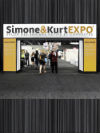The flashlight is the most basic model of a beam laser. The beam diffuses through the lens, creating a fuzzy cone. Lasers, on other hand, shoots an even narrower and more precise beam that extends for a greater distance. It is also known as an extremely collimated beam. The wavelength of a laser is around one gigahertz. The greater the wavelength, the greater energy that is released.
When you are using a laser for a specific purpose, you must be aware of the different types of wavelengths available. Lasers all have a precision of pointing that is within a certain tolerance. This is the difference between the mechanical axis (propagation the axis) and the axis (mechanical axis). Check that the mounting you’re using comes with the correct adjustments the need for this. These are the most popular wavelengths for lasers. The right wavelength for you is dependent on the scope of your project.
Lasers produce light by condensing energy from an excitation medium onto small fuel pellets. Due to the intense heat that the beam produces, the fuel inside the chamber is ignited. This creates an explosive nuclear reaction that releases massive quantities of energy. The technology comes from Lawrence Livermore National Laboratory. This technology may provide a solution to the global energy problem. It will be several years before this technology becomes widely used, but it is certainly not impossible.
The heat that results from the process is so intense, it has an extremely high melting temperature. The gas that is hot in the chamber will cause the pellet to vaporize and turn into a fuel. Fusion can generate a great deal of energy and is totally safe. This technology is an important advancement in solar energy, and it is a promising innovation. The Lawrence Livermore National Laboratory is the main source for the technology. This technology will allow for the production of clean energy around the world.
In a lab, lasers are used to power electric cars. A power plant can produce electricity from heat generated by a gas. In such a situation it is the case that a cheap laser pointers can produce electricity. It also powers a computer. It is in the test phase and has not been commercialized yet. While there are many advantages associated with the technology, it’s in its early phases. Although this technology isn’t a perfect solution, it will to make solar panels more affordable and produce renewable energy.
Another advantage of lasers is the ability to generate heat from different sources. These reactions can result in electricity from the heat generated. This is an enormous benefit since the technology is cheaper than generating electricity from renewable sources. Along with making electricity, lasers are also greener as compared to other forms of energy. The main disadvantages of the technology is that it’s not yet available for commercial use. It’s still in research.
There are a variety of lasers. The kind you select depends on the type of laser. If you wish to produce the light of a certain wavelength, you must use the polarizer. This will provide you with the most effective results. You could also make use of an unpolarizer in case you don’t need the Polarizer. Alternately, you can create a diffraction-limited laser. If you want a light source that is smaller you could make use of a diffraction-limited laser.
Precision is the most important characteristic of a laser beam. A lens can control the intensity of a laser beam. You can make many different products using an energy source that includes an lens that is a polarizer. This is how you can produce more efficient solar cells. After you’ve developed your own Polarizer, you can create it to be compatible with solar cells. These devices can be used in laboratories to measure the intensity light.
A pattern generator generates the laser beam. A pattern generator is employed to generate different patterns. You can use the pattern generator cheap laser pointers to generate your own patterns. They can be used to create a light source based on lasers that is both wide and narrow. This can be very effective for applications that require to be speedy. Because the source of power is not extremely strong, a diffraction-limited laser can be made in a tiny space.


